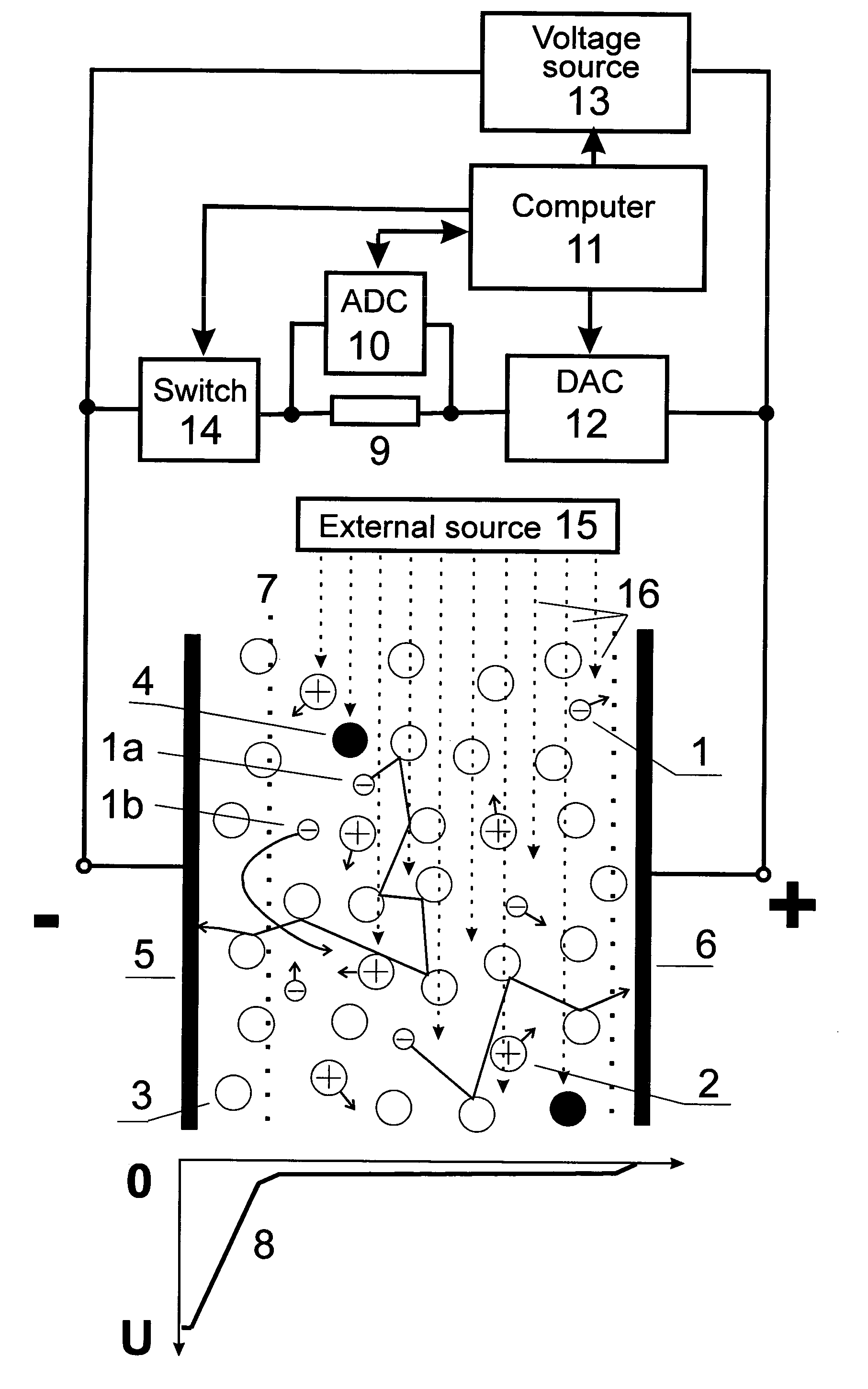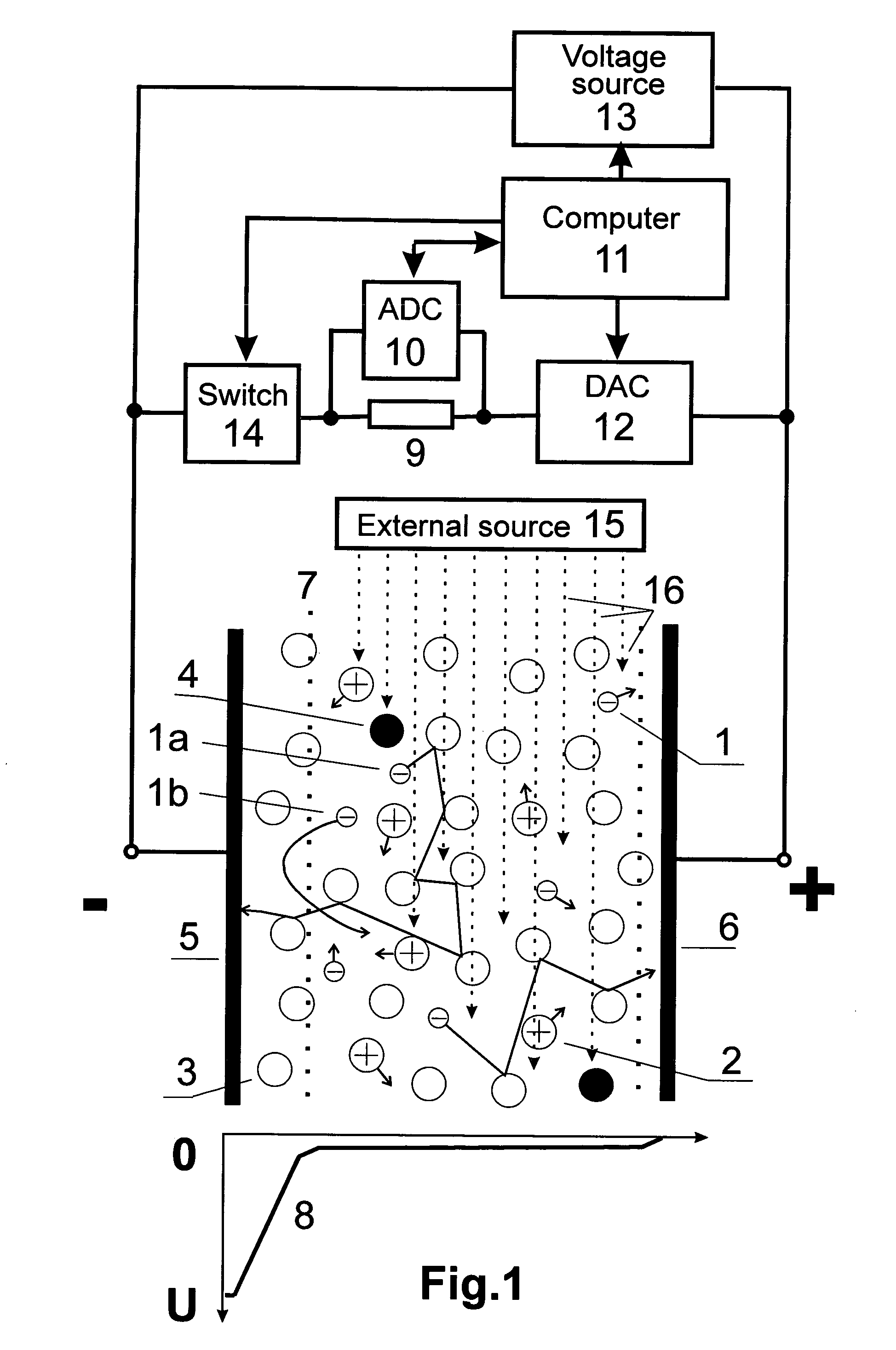Gas analysis method and ionisation detector for carrying out said method
a technology of ionisation detector and gas analysis method, which is applied in the direction of dispersed particle separation, instruments, separation processes, etc., can solve the problems of large detector dimensions, inability to make a direct qualitative analysis (to identify the impurity atom or molecule) or quantitative analysis (to measure the impurity concentration) one, etc., to achieve optimal radiation utilization
- Summary
- Abstract
- Description
- Claims
- Application Information
AI Technical Summary
Benefits of technology
Problems solved by technology
Method used
Image
Examples
Embodiment Construction
[0037] The technical designs to implement the suggested method of gas analysis and the ionization detector are based on a qualitative model of the physical processes to be described below. The concrete details of the physical model described don't affect a broad understanding of the basic features of the present invention.
[0038] When atoms or molecules of an impurity A collide with particles B*, having a definite energy Ep, they become ionized to produce free electrons {overscore (e)}, if the B* particles energy is high enough:
A+B*→A++B+{overscore (e)} (1)
[0039]FIG. 1 shows schematically electrons 1 and impurity ions 2 produced by the collisions, as well as main gas atoms 3. As the particles of a definite energy Ep there may be used, e.g., metastable or resonant excited atoms of the main gas 4 (the main gas also be referred as a buffer gas). Additionally, one can use photons with a given energy Ep from an external source as said particles of a definite energy. The electrons rele...
PUM
| Property | Measurement | Unit |
|---|---|---|
| pressure | aaaaa | aaaaa |
| energy gap | aaaaa | aaaaa |
| energy gap | aaaaa | aaaaa |
Abstract
Description
Claims
Application Information
 Login to View More
Login to View More - R&D
- Intellectual Property
- Life Sciences
- Materials
- Tech Scout
- Unparalleled Data Quality
- Higher Quality Content
- 60% Fewer Hallucinations
Browse by: Latest US Patents, China's latest patents, Technical Efficacy Thesaurus, Application Domain, Technology Topic, Popular Technical Reports.
© 2025 PatSnap. All rights reserved.Legal|Privacy policy|Modern Slavery Act Transparency Statement|Sitemap|About US| Contact US: help@patsnap.com



